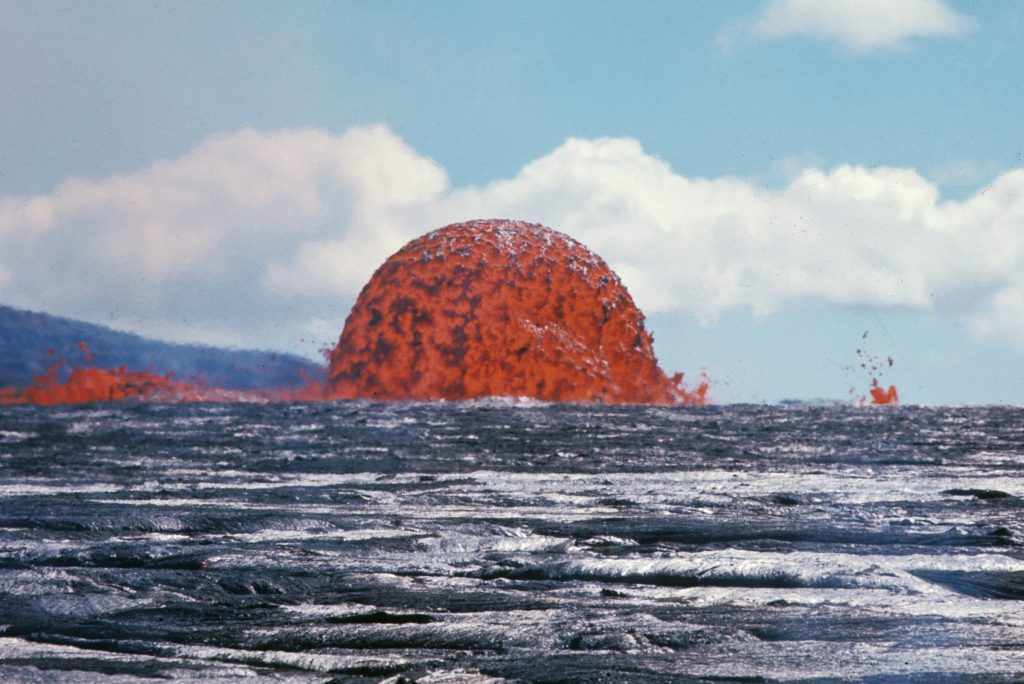
One thousand seven hundred seventy-four days – the duration of the Mauna Ulu eruption of Kilauea Volcano in Hawaii. That is five years in total!
The longest running eruption ever recorded at that time, it produced about 460 million cubic yards of lava. From 1969 to 1974, the eruption was viewable to the public via observation platforms, creating an incredibly rare phenomenon.
The US Geological Survey has recently released a photo captured in 1969 by photographer J.B. Judd, depicting a rare dome fountain which measured roughly 65 feet high. The symmetry of the dome, one of 12 fountaining events which took place in the first year was responsible for spillage into the ocean 7.5 miles away.
The dome lasted from October 10th to October 13th and could’ve reached 245 feet high.
The dome was unique compared to any typical sighting due to its shape. In the picture, it looks almost as if the dome is perched upon the water, but these are actually ripples of lava.
Dome fountain of episode 10, October 10–13, 1969, eruption of Kilauea Volcano. This dome fountain is about 20 m (65 ft) high. Symmetrical dome fountains such as this are rare. #Tbt #HI @Volcanoes_NPS pic.twitter.com/sKSQaVINKs
— USGS (@USGS) March 29, 2018
Fountaining usually occurs when the eruption forms a fissure, vent, or lava lake with gas bubbling up causes expansion and explosion.
Pu’u ’ Ō’ō has since taken the record, ongoing since 1983, yet this photo still reminds us of how active Hawaii’s volcanoes have been throughout history.











COMMENTS